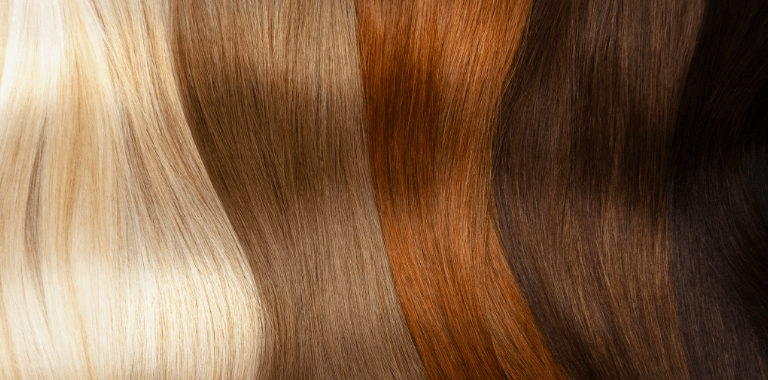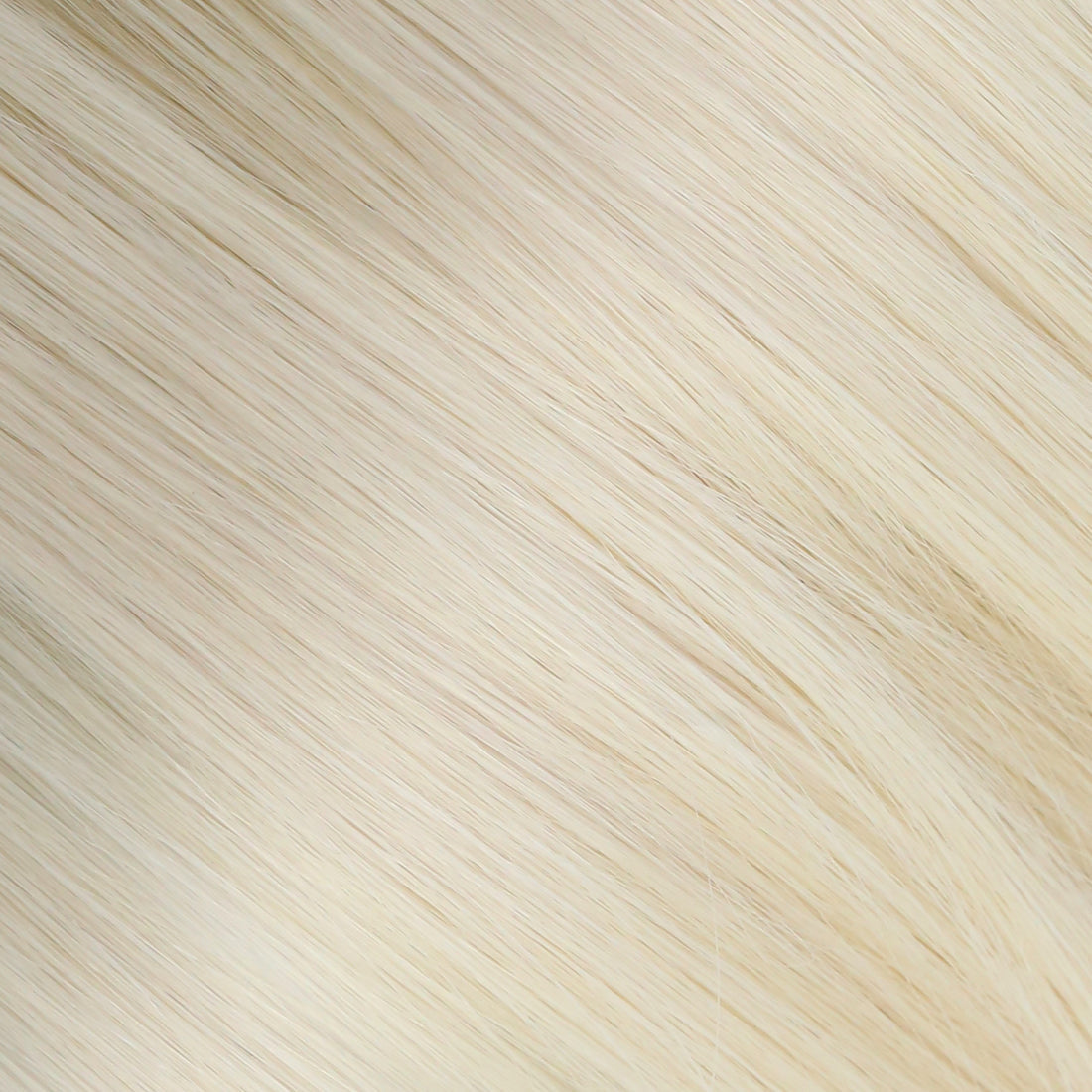If you're a wig lover or extension enthusiast, knowing about synthetic hair is an absolute must. Synthetic hair has come a long way and can look incredibly natural, but there are key differences you need to be aware of. It's essential to understand what synthetic hair is made from, how to spot the differences between synthetic and real hair, and the best care practices to keep your synthetic pieces looking fabulous. With the right knowledge, you can make the most out of your synthetic hair extensions or wigs.
What is synthetic hair?
Synthetic hair is a popular choice for wigs and extensions, made from man-made fibers like polyester, acrylic, and polyvinyl. These fibers are designed to mimic the look and feel of natural hair, offering a cost-effective and versatile alternative. Unlike real hair, synthetic hair comes pre-styled and holds its shape even after washing, making it low-maintenance and convenient. However, it's important to note that not all synthetic hair can withstand heat styling, so always check the manufacturer's guidelines. While it might not have the same natural texture variations as real hair, advancements in technology have made synthetic hair incredibly realistic and an excellent option for those looking to switch up their style without the commitment or cost of natural hair.
What is the difference between synthetic hair and human hair?
Whether you're deciding between synthetic and human hair or simply want to identify the material of your current products, this guide is here to help. Understanding the differences can make all the difference in choosing the right hair for your needs. Here's a breakdown of how synthetic hair compares to real human hair in terms of feel, appearance, styling capabilities, and cost.
Synthetic hair feels different from real hair
When you touch synthetic hair, it often feels tougher and thicker compared to real human hair. While advancements in technology have made high-quality synthetic hair more realistic, it still lacks the natural softness and movement of human hair. This difference in texture can be noticeable, especially if you are accustomed to the feel of natural hair.
Synthetic hair can look shiny and unnatural
One of the most common giveaways of synthetic hair is its shine. Some synthetic hair can appear overly shiny and unnatural, making it easy to spot compared to real human hair, which has a more subtle, varied sheen. High-quality synthetic hair can minimize this effect, but it still may not perfectly match the natural luster of human hair.
Synthetic hair has limited styling options
Most synthetic hair cannot be stretched or heated, limiting your styling options. You won't be able to use curling irons, straighteners, or other heat tools on synthetic wigs or extensions unless they are specifically designed to be heat-resistant. This can be a major drawback if you enjoy frequently changing your hairstyle.
Synthetic hair is more affordable
One of the biggest advantages of synthetic hair is its cost. Synthetic hair products are generally less expensive than real human hair, making them an attractive option for those on a budget or those who want to experiment with different looks without a significant financial commitment. However, this affordability often comes with trade-offs in terms of feel, appearance, and styling flexibility.
How to differentiate synthetic hair from human hair
Sometimes, identifying synthetic and human hair isn't as straightforward as just feeling or looking at it. When you can't rely on touch or naked eye to tell synthetic and human hair apart, there are some other practical methods to help you distinguish between the two.
Burn the hair
One effective way to differentiate between synthetic and human hair is the burn test. Carefully snip a small strand of hair and burn it. Human hair burns slowly and smells like burnt protein (similar to the smell of burning feathers). It turns to ash. In contrast, synthetic hair burns quickly, smells like burning plastic, and forms a ball of melted fiber instead of turning to ash. Be cautious and perform this test safely, preferably over a non-flammable surface.
Place the hair in water
The water test can also help. Fill a bowl with water and place a strand of hair in it. Human hair absorbs water and sinks when placed in a bowl of water. Synthetic hair, on the other hand, tends to float on the surface due to its lightweight fibers. This simple test can be quite revealing.
Apply heat to the hair
If you have access to a low-heat curling iron or straightener, you can try the heat test. Set the tool to a low temperature and gently apply heat to a small section of the hair. Human hair will handle low to moderate heat without much damage, while synthetic hair will melt or get damaged quickly unless it’s specifically labeled as heat-resistant.
Consult a professional
If you're still unsure, consulting a professional stylist or wig expert can be invaluable. They have the experience and tools to accurately identify the type of hair, ensuring you get the right product for your needs.
Understanding these methods will give you confidence in distinguishing synthetic hair from human hair, helping you make the best choice for your wigs and extensions.
Can you style synthetic hair without heat?
Well, yes. While most synthetic hair cannot withstand heat styling, there are several effective methods to style it without damaging the fibers. Here are some tips to keep your synthetic wigs and extensions looking fabulous.
Use steam
A gentle way to style synthetic hair is by using steam. Hold the wig or extensions over a steam source, such as a kettle or a fabric steamer, and shape the hair as desired. The heat from the steam is less intense and can help you achieve soft waves or smooth out any kinks without melting the fibers.
Rollers and cold setting
You can also use rollers to style synthetic hair. Dampen the hair slightly, wrap it around the rollers, and leave it to dry completely. For added hold, you can use a blow dryer on a cool setting to speed up the drying process. Once dry, remove the rollers to reveal beautiful curls or waves.
Styling products
Specialized styling products for synthetic hair, such as setting sprays and gels, can help you achieve and hold your desired style. These products are formulated to work with synthetic fibers, providing hold and shape without requiring heat.
Braiding and twisting
Creating braids or twists in synthetic hair can add texture and interest. Leave the braids or twists in overnight or for several hours to allow the hair to take on the shape. When you undo them, you'll have beautiful, heat-free waves or curls.
With these methods, you can style your synthetic hair without the risk of heat damage, ensuring your wigs and extensions stay in great condition while looking stylish. For more detailed tips and tricks, check out our full blog on styling synthetic hair.
Can I dye synthetic hair extensions?
Unfortunately, you cannot dye synthetic hair extensions. Synthetic hair is made from various plastic fibers that do not absorb hair dye like natural hair does. Attempting to dye synthetic hair can lead to uneven color, damage to the fibers, and an overall unsatisfactory result. The dye can’t penetrate the synthetic fibers, which means the color will not hold or appear as intended.
Furthermore, the chemicals in hair dye can break down the synthetic fibers, causing them to become brittle and prone to breakage. This can significantly reduce the lifespan of your synthetic hair extensions.
If you want to style or dye your extensions or wigs, we highly recommend investing in real human hair products. Human hair extensions can be dyed, styled with heat tools, and treated just like your natural hair, offering far greater versatility and a more natural look. For those looking to change their hair color or style frequently, human hair is the best choice.
INTACTE: Your perfect choice for voluminous and longer hair
INTACTE hair extensions are all made from virgin Remy hair, which is real human hair that has never been chemically treated or processed. It ensures the cuticles of the hair are intact and aligned in the same direction for a natural look and feel. This guarantees that our extensions are soft, shiny, and tangle-free.
INTACTE offers a variety of extension types to suit your needs, including clip-in, tape-in, k-tip, i-tip, and hand-tied wefts. Each type is designed for easy installation and long-lasting wear, providing you with the versatility to change your hairstyle effortlessly.
Conclusion
In conclusion, whether you're a wig enthusiast or an extension lover, understanding the differences between synthetic and human hair is crucial for making informed choices. Synthetic hair offers a budget-friendly, low-maintenance option, but it has limitations in styling and appearance. On the other hand, human hair provides unparalleled versatility, natural feel, and the ability to dye and style as desired. For those seeking the best of both worlds, INTACTE hair extensions, made from 100% virgin Remy hair, offer a premium solution with various types to suit every need. Embrace the beauty and flexibility of real human hair extensions and elevate your hair game with confidence.












